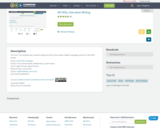
This template was created to help plan lessons that support English Language Learners for the SPELL project.
- Subject:
- Arts and Humanities
- Mathematics
- Social Science
- Material Type:
- Lesson Plan
- Date Added:
- 05/13/2021

This template was created to help plan lessons that support English Language Learners for the SPELL project.
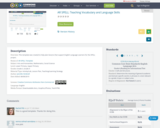
This template was created to help plan lessons that support English Language Learners for the SPELL project.
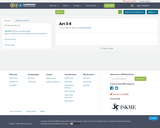
Overview: Art ideas for Art 3-8
Subject: Arts and Humanities Level: Upper Primary, Middle School Grades: Grade 3, Grade 4, Grade 5, Grade 6, Grade 7, Grade 8
Material Type: Activity/Lab
Date Added: 07/12/2019
License: Creative Commons Attribution Non-Commercial Creative Commons Attribution Non-Commercial
Language: English
Media Format: Text/HTML
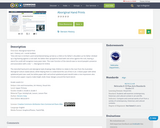
Aboriginal Hand Print(art + history; art + social studies)"One old man in Arnhem Land remembered being carried as a child on his father's shoulders as his father climbed up a log leaning against a rock wall. His father then sprayed his hand with red ochre against the rock, leaving a stencil he could still recognize many years later. The main function of the stencils was to record people's presence and association with a site." — Aboriginal Art OnlineThe stenciled hand print and aboriginal style drawings help children to relate to the man from the Australian Aboriginal Culture stated above, while helping them to understand the use of line in art. A black paper with white splattered paint was used, but white paper with red (ochre) splattered paint would make a nice impression also. Construction paper crayons make bright, bold, linear designs around the hand stencil.Grade Levels K-4
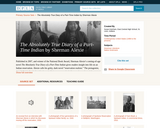
This collection uses primary sources to explore The Absolutely True Diary of a Part-Time Indian by Sherman Alexie. Digital Public Library of America Primary Source Sets are designed to help students develop their critical thinking skills and draw diverse material from libraries, archives, and museums across the United States. Each set includes an overview, ten to fifteen primary sources, links to related resources, and a teaching guide. These sets were created and reviewed by the teachers on the DPLA's Education Advisory Committee.
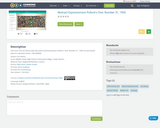
This art history video discussion examines Jackson Pollock's "One: Number 31", 1950, Oil and enamel paint on unprimed canvas, 1950 (MoMA).
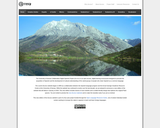
The University of Kansas Collaborative Digital Spanish Project (Acceso) is an open-access, digital learning environment designed to promote the acquisition of Spanish and the development of cultural understanding of the varied groups of people who share Spanish as a common language.
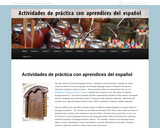
Actividades de práctica con aprendices del español is an online corpus of videos of second language and heritage language learners of Spanish during oral interviews and provides supplemental activities to help viewers investigate learners’ language and proficiency levels.

The true tale of the Recycled Orchestra of Paraguay, an orchestra made up of children playing instruments built from recycled trash. The resources includes a lesson plan/book card, a design challenge, and copy of a design thinking journal that provide guidance on using the book to inspire students' curiosity for design thinking. Maker Challenge: Students will create their own musical instruments with recyclable materials.
A document is included in the resources folder that lists the complete standards-alignment for this book activity.
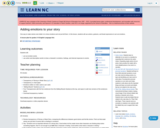
One way to make stories even better is to show emotions, and not just tell them. In this lesson, students will use actions, gestures, and facial expressions to act out emotions.
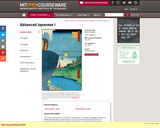
Systematic development of reading, writing, and oral communication skills. Introduction to advanced grammar that deepens the understanding of Japanese culture and society through reading and discussion. Lab work required. This course covers lessons 22 through 27 of Japanese: The Spoken Language by Eleanor H. Jordan with Mari Noda. The goal of the course is to continue to build oral proficiency by expanding your knowledge of vocabulary and grammar. Class hours will be devoted to developing speaking skills in a variety of circumstances; making requests, invitations, apologies, suggestions, dealing with problems, expressing your opinions, etc. Grammatical and social appropriateness on your utterances will be stressed. Keep in mind that daily tape-work is essential.
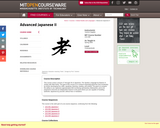
Continuation of 21F.505. Further development of reading, writing, and oral communication skills. Extension of advanced grammar and further enhancement of advanced vocabulary. Variety of cultural elements studied through readings, video, and discussion. Lab work required. This course covers Lessons 27 through 30 of Japanese: The Spoken Language by Eleanor H. Jordan with Mari Noda. The goal of the course is to continue expanding grammar and vocabulary by further developing four skills: speaking, listening, reading, and writing. The goal is to acquire the ability to use Japanese appropriately with increasing spontaneity emphasized, and to be prepared to become an independent learner to the point where you are capable of handling authentic Japanese by yourself, without fear or hesitation.
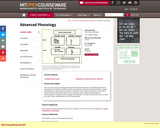
This course focuses on phonological phenomena that are sensitive to morphological structure, including base-reduplicant identity, cyclicity, level ordering, derived environment effects, opaque rule interactions, and morpheme structure constraints. In the recent OT literature, it has been claimed that all of these phenomena can be analyzed with a single theoretical device: correspondence constraints, which regulate the similarity of lexically related forms (such as input and output, base and derivative, base and reduplicant).
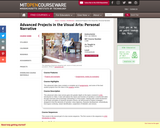
Investigates conceptual and formal issues in different media or between media such as sculpture, photography, and video. Explores issues of representation, interpretation, and meaning, and how they relate to historical, social and cultural context.
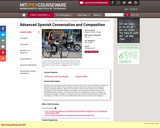
En este curso el estudiante perfeccionará su comunicación oral y escrita mediante el estudio y la discusión de temas relacionados al impacto social y cultural de la ciencia y la tecnología en ciertas sociedades hispanas. Algunos de los temas a tratar son los efectos de los cambios tecnológicos en la estructura familiar y comunitaria, en las relaciones entre los sexos, en la identidad personal y cultural, en el mundo natural y en los sistemas de valores, la religión, la educación y el trabajo. También se examinan y discuten diversas actitudes hacia la innovación tecnológica y científica así como las ramificaciones éticas de las decisiones tecnológicas.

This course is a continuation of 24.951. This semester the course topics of interest include movement, phrase structure, and the architecture of the grammar.
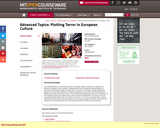
This interdisciplinary course surveys modern European culture to disclose the alignment of literature, opposition, and revolution. Reaching back to the foundational representations of anarchism in nineteenth-century Europe (Kleist, Conrad) the curriculum extends through the literary and media representations of militant organizations in the 1970s and 80s (Italy's Red Brigade, Germany's Red Army Faction, and the Real Irish Republican Army). In the middle of the term students will have the opportunity to hear a lecture by Margarethe von Trotta, one of the most important filmmakers who has worked on terrorism. The course concludes with a critical examination of the ways that certain segments of European popular media have returned to the "radical chic" that many perceive to have exhausted itself more than two decades ago.
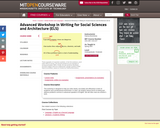
Advanced subject focusing on techniques, format, and prose style used in academic and professional life. Emphasis on writing as required in fields such as economics, political science, and architecture. Short assignments include: business letters, memos, and proposals that lead toward a written term project. Methods designed to deal with the special problems of those whose first language is not English. Successful completion satisfies Phase II of the Writing Requirement. This workshop is designed to help you write clearly, accurately and effectively in both an academic and a professional environment. In class, we analyze various forms of writing and address problems common to advanced speakers of English. We will often read one another's work.
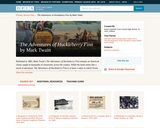
This collection uses primary sources to explore The Adventures of Huckleberry Finn by Mark Twain. Digital Public Library of America Primary Source Sets are designed to help students develop their critical thinking skills and draw diverse material from libraries, archives, and museums across the United States. Each set includes an overview, ten to fifteen primary sources, links to related resources, and a teaching guide. These sets were created and reviewed by the teachers on the DPLA's Education Advisory Committee.
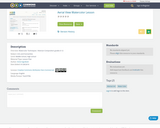
Watercolor Techniques / Abstract Composition grades 6-12